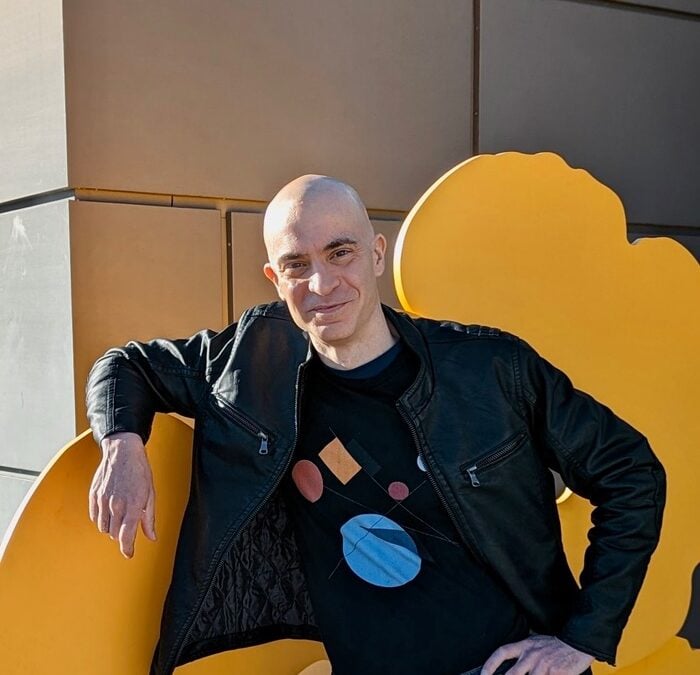The U.S. government supports philanthropy by giving donors substantial tax breaks. A progressive campaign called Donor Revolt for Charity Reform says that the public isn’t getting enough in return. Today, the group has published a list of over 160 wealthy donors calling for reform legislation. Signers include filmmaker Abigail Disney, and author and activist (and Worthy 100 honoree) Leah Hunt-Hendrix.
They plan to push for legislation to force foundations and a growing type of philanthropy called donor-advised funds to move more money to charities, on a faster timetable. The to-be-written law would also tighten rules about how philanthropies spend and account for their money, including more public reporting.

The initiative also released a report on foundations, nonprofits, and financial institutions lobbying against reform legislation.
Mandating More Giving
“The whole idea that we’re subsidizing a perpetual, multigenerational, dynastic foundation is not a good use of taxpayer subsidies,” says Chuck Collins. The director of the Program on Inequality and the Common Good at the solidly left-leaning Institute for Policy Studies is the main driver of the campaign. (It’s joined by progressive organizations Patriotic Millionaires, Solidaire Action, the Excessive Wealth Disorder Institute, Resource Generation, the #HalfMyDAF Campaign, and the Decolonizing Wealth Project.)
The “perpetual” notion comes from the fact that current law requires yearly payouts that are generally less than the rate at which foundations have seen their endowments soar in the stock market. Under federal law, private foundations have to give away a minimum of 5% of their assets annually.
“Typically, over the years, we’ve made about twice that in our investment returns,” says Scott Wallace, a Donor Revolt signer and co-chair of the Wallace Global Fund (and grandson of one of FDR’s vice presidents). “So the idea of the minimum is that they tried to pick something that was approximately enough to allow a foundation to last forever.”

What’s more: There are no payout requirements at all for the increasingly popular donor-advised funds. DAFs are small nonprofits that allow a wealthy individual, couple, or family to set aside tax-deductible money for charitable giving. They are more loosely regulated and have more-favorable tax benefits for donors than a private foundation would. (They are also popular with young heirs to family fortunes due to their flexibility.)
Pandemic-Shocked Philanthropy
Dissatisfaction with charity regulations has been brewing for years among progressive donors and advocates. But the Covid pandemic supercharged the issue, as foundations, worried about the economic hit to their endowments, pulled back on giving. “I was surprised that at a time of such immense need, and hardship to nonprofits, that foundations were actually reducing their payout, when you would have expected that they would increase, in light of the humanitarian crisis,” says Wallace. In response, he organized a campaign supporting draft legislation to temporarily up foundation payouts to 10% per year.
That didn’t get far. But in 2021, a bipartisan group of senators introduced the DAF-focused Accelerate Charitable Efforts Act. The ACE Act would require 5% annual payouts, cut back on several DAF tax benefits, and eliminate benefits on any money that sits in the fund for more than 15 years. Companion legislation has been introduced in the House, but the bills haven’t progressed far.
Tech multimillionaires Jen and David Risher (the CEO of Lyft) have proposed going much farther than ACE. In May of 2020, they launched an initiative called #HalfMyDAF, putting up $1 million as partial matching funds to DAFs that gave away half of their assets by September. Their organization has issued roughly the same challenge every year since, facilitating $50 million in giving.
“I would love to see a bigger pot of money with matches, so that we can have more money moving,” says Jen Risher. “I mean, there’s billions of dollars. But how do we inspire that money to actually move?”
A New Call for Legislation
Wallace has given up on inspiring. “I am afraid that a federal mandate is the only way to force those conservative foundations to increase their payout,” he says. By “conservative,” he doesn’t mean on the political spectrum, but on how freely philanthropists spend money. “The stinginess cuts across ideology,” he adds.
While even the ACE Act remains stalled, Donor Revolt has far-bigger plans. “We are talking to several members of Congress about introducing some sort of an omnibus charity reform bill,” says Collins.
He won’t quite say who those politicians are. But he names likely allies in the Senate, including Democrat Ron Wyden and ACE Act sponsor Angus King, an independent, and cosponsors Republican Chuck Grassley and Democrat Sheldon Whitehouse.
The key demands would be to increase annual private foundation giving requirements to at least 7%—and 10% for those with more than $50 million—and to require DAFs to pay out funds within 5 years of receiving them. There would also be accounting changes. For instance, foundations can now count management expenses as part of their required payout. Donor Revolt says this should be limited to 1% of assets and not include compensation to family members. Their desired law would also tighten up a range of tax benefits and deduction amounts, among other measures.
Prodigious Givers
One bit of pushback that Wallace hears is that foundation boards have a responsibility to maximize returns on their endowments—which spending above the mandated 5% would hamper. “That’s a subjective interpretation of what their fiduciary responsibility is,” he says. “The substantive programmatic priorities of the foundation trump any subjective notion that our sole mission is to maximize assets.”
Several foundations are certainly getting away with it. “Our payout has gone from 5, 6, 7% to now habitually 15, 20%…because we see crises,” says Wallace. He points to other philanthropists who have drained their foundations. Steelcase heir John Hunting’s Beldon Fund spent down all of its money between 1998 and 2008. Duty Free Shoppers magnate Chuck Feeney’s over $8 billion Atlantic Philanthropies closed out at the end of 2020.
Collins also praises multibillionaires who have been spending at a rapid rate, including Salesforce cofounder Marc Benioff, Amazon tycoon MacKenzie Scott, and Apple beneficiary Laurene Powell Jobs.
Foundation and Business Opposition
Much of Donor Revolt’s own community seems resistant to its wishes. Wallace and Collins name as one of their main opponents the Council on Foundations, an association of over 900 philanthropies (including, at times, the Wallace Global Fund). “They have a board that’s made up of mostly large, perpetual-legacy foundations,” says Collins. “They don’t want…to pay out any more than they have to. They don’t want any new rules or requirements.”
I sent a message to the Council, through its press email, for its perspective on this characterization. I did not hear back by press time.
There are particular challenges around DAFs. Community foundations or financial institutions’ nonprofit spinoffs, such as Fidelity Charitable Gift Fund, administer the funds and receive a small percentage of the fund’s value in fees. Collins and other critics believe this creates an incentive to resist draining the funds faster. “In the case of the community foundations, DAFs are becoming more and more their bread and butter,” says Collins.
“Fidelity has indicated that they would not oppose a mandated payout requirement,” he adds. And the organization reportedly estimates that most DAFs it administers are paying out 15-20% each year. Although Jen Risher is wary. “They’ll tell you that they’re spending out 20%, but it’s very opaque,” she says.
I reached out to Fidelity for its perspective but did not hear back by press time. A Worth contributor writing about DAFs has been trying to arrange an interview with Vanguard.
I did connect with Schwab Charitable, a nonprofit entity separate from Charles Schwab Corp (although the latter provides services to the nonprofit). “Two-thirds of Schwab Charitable donors say they give more to charity as a result of having a donor-advised fund account than they otherwise would,” the organization said in an email, based on its annual survey of donors. It went on to say that its donors granted more than $6 billion to charity in 2023—up 31% from 2022. This came out to more than a million grants to over 127,000 charities.
A Controversy Over Lobbying
Despite some promising signs from Fidelity, Collins believes the company is also lobbying against his cause. Also today, the Institute for Policy Studies (IPS) released a report asserting that 21 for-profit firms and nonprofit organizations have spent $11 million lobbying against DAF reform since 2018. But the data—from OpenSecrets.org, the U.S. Congress Lobbying Disclosure Act database, and nonprofits’ publicly available tax returns—is a bit fuzzy.
For instance, the report cites disclosures from Fidelity Charitable Gift Fund, showing it spent $40,000 from Q1 2021 to Q2 2023 on lobbying efforts that included the ACE Act. But it can’t say specifically how much of that money went to ACE, because the report doesn’t provide a breakdown. The Vanguard Charitable Endowment Program is listed as spending $590,000 on lobbying that includes ACE.
To estimate the ACE portion, IPS considered how often it was mentioned relative to other legislation in disclosure reports—and reckons that all of that Fidelity Charitable and Vanguard Charitable lobbying focused solely on the ACE Act.
For Schwab, data comes from lobbying reports for the separate Charles Schwab Corp, not Schwab Charitable. The ACE Act is mentioned in Schwab Corp’s $530,000 lobbying disclosures (Q1 2021-Q2 2023), and IPS believes the entire amount went to ACE Act lobbying. Schwab Corp disputes this, saying in an email to Worth, “Schwab advocates on many topics of importance to our clients. The quarterly filling you refer to covers Schwab’s advocacy on the issues listed and does not reflect the amount of time spent on any one issue [including the ACE Act].”
The IPS report also estimates spending on lobbying against DAF reform by several other nonprofits, including Americans for Tax Reform, the Community Foundation Awareness Initiative, the Council on Foundations, the Jewish Federations of North America, the Leukemia & Lymphoma Society, and the National Philanthropic Trust.
A Possible Inflection Point
Drafting and passing legislation is hard under any circumstances—let alone in a closely and bitterly divided Congress, astride a Presidential election, in a more-than-trillion-dollar sector with countless vested interests. If the ACE Act—a focused, bipartisan effort by Congressional heavyweights—is stalled, what hope is there for a yet-unwritten law that aims to do far more?
But the Donor Revolt advocates do seem to be tapping into important sentiments—from the general mistrust of the ultra-rich to longstanding dissatisfaction with how private foundations and especially DAFs are run (including pressure from the IRS). And while they champion the masses, these progressive organizations may also get a boost from some of the world’s richest people—like Benioff and Scott—who are setting the example of giving money out much more freely.
If nothing else, a heated debate among the wealthy and powerful has started.




